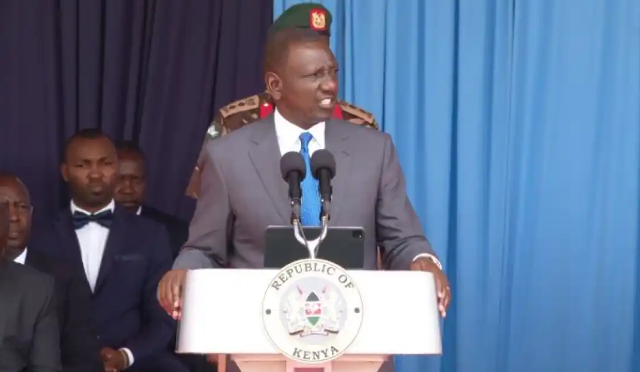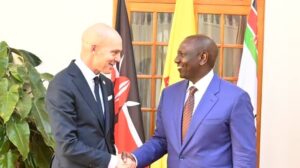President William Ruto has seemingly shifted his stance regarding the height limitations for high-rise buildings near Nairobi’s Moi Air Force Base in Eastleigh.
Speaking in Eastleigh on Saturday, during the Kenya Air Force’s 60th anniversary celebrations, Ruto asserted the necessity for strict adherence to building height regulations in the area.
He emphasized the importance of respecting these rules to prevent encroachment on the airbase’s airspace.
“We will make sure that this facility does not lose its premier position and all buildings that have been built beyond the height that are provided for in law,” Ruto declared. “We will work with the Nairobi City County to make sure that all developers keep to the standards that we have agreed with the Kenya Air Force and the Kenya Defense Forces.”
This statement represents a notable shift from Ruto’s previous assurances given just a month earlier.
In May, Ruto had lifted a ban that capped construction heights in Eastleigh at 12 storeys, promising developers greater freedom.
Speaking in Kiamaiko, Mathare, he had stated, “I am the Commander-in-Chief.
In Eastleigh, previously, you could not build more than a 12-storey building, but I have now declared that you can build up to 25 or 30-storey buildings so that citizens can get accommodation and live in a harmonious neighborhood.”
The apparent contradiction in Ruto’s statements has sparked significant public reaction. Kenyans took to social media platform X to voice their concerns and highlight the inconsistency in the Head of State’s stance.
This turn of events has left many questioning the government’s policy direction and the implications for developers and residents in Eastleigh.
Ruto’s initial announcement in May was welcomed by developers and investors, who saw the lifting of the height restriction as a boon for economic growth and urban development in Eastleigh.
The promise of taller buildings was expected to address the housing shortage and stimulate the local economy. However, the recent re-emphasis on strict adherence to height regulations could signal a more cautious approach, prioritizing safety and operational considerations of the nearby Moi Air Force Base.
The Kenya Air Force’s concern over high-rise buildings near their base is not unfounded. Tall structures in close proximity to airbases can pose significant risks, including interference with flight paths and potential security threats.
Therefore, maintaining strict building codes in such areas is crucial for ensuring the safety and efficiency of military operations.
The fluctuating directives from President Ruto highlight the complex balance between fostering urban development and maintaining stringent safety standards.
As the government seeks to navigate these challenges, clear and consistent policies will be essential to provide direction for developers and assure the community of Eastleigh.
While President Ruto’s recent reaffirmation of building height regulations around Moi Air Force Base underscores a commitment to safety and operational integrity, it also raises questions about the future of urban development in Eastleigh.
The situation calls for a careful consideration of both developmental aspirations and the critical need to safeguard military infrastructure.
As the dialogue between stakeholders continues, the hope is that a balanced and sustainable approach will emerge, benefiting both the community and the nation’s defense objectives.





















Add Comment